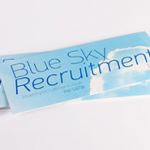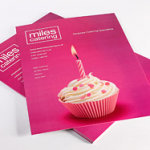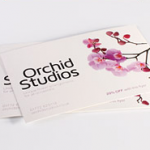When thinking about how to market your product, its packaging shouldn’t be the last thing that you consider. Even if you’re selling an online-only digital product, packing design is still relevant.
For instance, in the days when computer stores sold boxed software on DVD/CD, they needed a well-designed box to sit on the shelf. While that is no longer a reality, people still remember the packaging. Browse through computer software advertisements on the Internet, and you’ll be surprised at how many feature ‘virtual’ product packaging.
The packaging that you use will say a lot about your company – it’s one of the first impressions that customers will create about your business. Your packaging is also a great opportunity to further spread your branding and even turn customers into repeat customers!
Keep reading to discover plenty of handy tips on how to make the most out of your product packaging as a small business.
Invest in Eco-Friendly Packaging
Going back even just five years, how many vegan products would you expect to see in an average supermarket? Certainly not many, and very expensive at that compared to their non-vegan counterparts. But now every food category has a vegan/vegetarian or health-conscious alternative.
Given that this sector is more environmentally conscious than the average and consumers seem willing to pay a little more, it’s fair to assume that general consumer attitude is trending towards the environment. In today’s environmentally conscious world, this is probably one of the most relevant product packaging design tips.
How to Make Your Packaging More Environmentally Friendly
Look carefully at the materials that you’re using. Most urban houses have recycling bins—make sure that most of the product’s packing is recyclable and prominently display a recycling logo on the packaging.
Show your company’s green credentials by using recycled materials in product packaging—it’s true to say that recycled materials tend not to look and feel as pristine as non-recycled. However, being able to print ‘Made from 100% recycled material’ on the packaging is a big plus point.
Don’t forget to use recycled paper for your paper mailings, too – otherwise eco-friendly packaging may come across as a token gesture or gimmick, rather than a sign that your business is serious about the environment. At 123Print, you can purchase both letterheads and envelopes made of 100% recycled paper.
Consider the Unboxing Experience
Over the past several years, the phenomenon of the ‘unboxing video’ has become popular on social media sites such as YouTube and TikTok. Simply put, they feature a customer unboxing a new product (opening it and taking it out of its packaging), and reviewing the experience.
You might wonder why anyone would sit through a video about unboxing a product, but they have become insanely popular. Steve Jobs at Apple revolutionised this experience, designing packaging with the same care and attention to detail lavished on the product itself. This approach sets and enhances the customer’s expectations for the product.
Now consumers, especially of high-end electronic devices and luxury cosmetic products, crave this experience. When choosing between different products, in the same category, many people search for unboxing videos on YouTube. A flattering unboxing review might make the difference when choosing between similar products.
Tips for Successful Unboxings
Here are some general tips to enhance your customers’ general unboxing experience.
1) Consider the cost of packaging. The material cost of packaging, especially high-end, can reach up to 10% of the total manufacturing cost. If your product is in a price-sensitive market, would this extra cost hurt your bottom line?
2) Know your customers. What is your target consumer’s attitude to the environment? To some, the cost of high-end packaging may seem an unnecessary expense and detract from the product.
3) Be creative. YouTube is a visual medium, so your packaging material should look good under lighting, not be too reflective and feature attractive colours with a well-designed logo and font.
4) Use easy-to-open packaging such as a cardboard box. The opening process should be smooth and easy – having to hack plastic packaging open with a pair of kitchen scissors isn’t very appealing.
5) Ensure the product is secure. You don’t want it falling from the packaging upon opening. If your product features multiple parts, use packing foam inside the box and make sure that each part is visible and secure. If your product is a foodstuff, package it in a resealable bag—it looks good, is easy to open and enhances the freshness of your product.
Imagine yourself as a YouTuber, unboxing your product: what comment would you make—if the experience feels good to you, then you’re on the right track.
Theme Your Packaging
The theme is an important element of packaging design. A product’s packaging may comprise multiple items, not just a single bag or a box. It’s good to employ a consistent design with each element.
Maybe you use matching colour schemes or design elements, such as tying packages with twine. Whatever it is, remember that people like the personal touch. If your product is presented in plain packaging, it’s unlikely that your customer would choose to feature it on their Instagram feed or other social media channel.
Your product, perhaps a manual coffee grinder, might come in a well-constructed, attractive box, but also include a matching bag for travel. These small touches of design flair make a difference when trying to stand out against the competition. This might not be so important in an online marketplace, such as Amazon, where advertisers focus on the product image, rather than packaging. However, for an online marketplace, such as Etsy, which focuses on artisan products, cute and thematic product packaging, helps products to stand out from the crowd.
Make Use of Seasons and Holidays
If your product is aimed at (or sold during) a particular holiday, design the packaging with that in mind—the obvious example is Christmas, with bold red, gold and green festive designs.
But it’s not only holidays that you should think about. There are seasonal products that would benefit from appropriate design. For instance, a consumer in a DIY store, looking for, say, a garden product, would subconsciously look for green packaging.
Use Clear and Attractive Language
If you’re lucky enough that a customer has picked up your product from the shelf, make sure that all the information they need to make the choice is included on the packaging.
For instance, if it’s a health food product, make sure that it includes details of its benefits.
Otherwise, the customer might put it back and choose another brand. If you’re selling clothing, you should have a clear label stating what materials it’s made from, and the percentage of the overall product.
Like all marketing, think like a customer. While your product packaging might include a detailed instruction leaflet inside, print enough instructions on the packaging to convince the customer that it’s what they need.
Is It Legal?
While the most important aspect of packaging design is to enhance the product’s desirability, you should always consider the legal aspect. Depending on product type, certain things that appear on the packaging, such as medicinal claims, may be legally restricted.
Also, make sure that any product claims that appear on the packaging are accurate and truthful. Lying to customers for the sake of selling more units isn’t a good look.
Encourage Brand Awareness and Recognition
While your company may have a varied product line, you always want people to know from whom they’re buying. Brand awareness requires a consistent design strategy across product lines.
For instance, consider supermarkets—they offer a range of products. There is never just one brand of soup or sunblock on the shelf and, of course, you want the consumer to pick up your product first, rather than the store’s own brand, or a competitor’s.
A consistent brand identity can help with this—something familiar in the packaging, perhaps a particular font or colour scheme to grab their attention and make them reflexively reach for your product first.
While your small business might not have the research budget of a national supermarket chain, it’s valuable, when planning product packaging, to put yourself in the mind of your customer. Think about what they might look for when searching for your type of product.
And of course, always prominently display your business’s logo and any taglines or slogans you may use on the outer packaging. That way, even if the customer doesn’t end up buying it, they’ll still be more likely to remember and recognise your brand in the future.
Include Extra Promotional Materials
In order to upsell to your customers, add some additional promotional material in the product packaging. For example, you might include a flyer with a special discount code for 10% off future purchases – this will encourage your customers to place another order.
You could also consider including a loyalty card inside the packaging, with one stamp already on it. People love to collect things, and loyalty stamps are no exception. The mere presence of a loyalty card will inspire them to shop with you again, and work towards the reward (whatever it may be).
Always make sure any promotional materials you include in your packaging are professionally designed and printed, to create the most favourable impression possible with your customers. 123Print carry a full range of professional-quality flyers, business cards and other promotional materials.
Our thousands of designs are fully customisable with your own wording and font choices, and will be shipped to you within 2 working days of your order. With our 100% satisfaction guarantee, you can have confidence in us to provide for all of your marketing needs.


